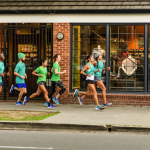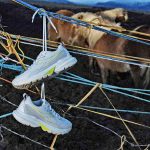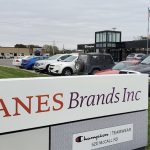Vendors and manufacturers in the industry kept the positive trend moving ahead in the 2003 second quarter, but saw sales growth and profit growth slow a bit from the first quarter results.
Much of the slower growth can be attributed to the pull-back seen at retail as retailers moved to clean up inventory amid slower-than-expected from the Iraq war, the weather and the economy.
Positive news coming out of the retail sector in late July and August could spell a nice upside on the vendor side as retailers move to re-fill shelves emptied during stronger-than expected Back-to-School sales as pent up demand and child tax-credit checks fueled a very strong buying spree over the last 30 to 45 days.
Overall, vendors and manufacturers that are tracked in the Vendor Chart (Click to Download) saw sales increase 10.5% from the second quarter of 2002, but that growth was a bit off the 19% gain seen in the first half. Profits as a whole gained 13.4% in the quarter over last year, but fell well short of the 25.2% gain seen in the first quarter.
All numbers are reported converted to U.S. dollars, so European parent companies such as Amer Group, adidas-Salomon and Puma that do not report in dollars look much better here than in their reporting currencies.
The slower growth in the industry was impacted in large part by the hard-lines companies, where sales grew just 3.7% from last year after picking up 6.8% in the first quarter. The weakness came in a few areas, but were impacted most by Fotoballs loss of its Post cereal promotion (not a very good industry indicator), weaker golf sales and issues at Nautilus and Luxottica.
Profits in the hardlines group actually declined 4.1% for the second quarter after gaining 7.8% in Q1. Strong profit gains at Huffy Corp. (+115%), K2, Inc. (+52.6%), Johnson Outdoors (+28.8%) and Brunswick (+16%) were offset by large profit declines at Nautilus (-81.8%), Amer Group (-49.3%, or -65.1% in Euros), Luxottica (-19.5%) and Oakley (-18.4%).
The hardlines group did not seem to be able to take advantage of the sourcing improvement seen by companies in the apparel and footwear sectors.
The Apparel sector saw sales in the second quarter grow 15.4%, a still very healthy growth rate, but a bit slower than the 18.7% rate seen in Q1. Profits, on the other hand surged 121% from last years Q2, easily outpacing the sectors stunning 75% profit growth in the first quarter.
Improved margins were the key here, with a number of companies reporting triple-, even, quadruple-, digit basis point gains in the quarter.
We saw both Ashworth and Russell post profits in the quarter versus losses a year ago, and saw Cutter & Buck and Sport Haley cut losses significantly. Columbia looked to its footwear business for much of its gain, but also saw benefits from the acquisition of Mountain Hardwear. But the big profit gains came from Quiksilvers (+67.4%) ride on the current hot surf apparel wave and Gildans (+23.2%) move to shift production to Latin America and its ability to undercut U.S. companies on T-shirts and Sport Shirts.
Again, Everlast kept sector profits lower with a 54.2% drop in net income.
Footwear sales were up 13.4%, pretty even with the 13.6% gain in the first quarter. Profits for these companies, while outpacing the sales gain at 19.9%, saw a noticeably slower growth rate than we saw in the first quarter. The sector benefited a great deal from improved sourcing and operational efficiencies, but margins (and sales) were hurt by downward pricing pressure and increased off-price deals.
The drag in this sector is coming from Vans and Skechers. Vans, which saw flat sales but also a loss that widened by more than 50%, is suffering from the same downturn in the skate market that also saw Airwalk parent Tare 7 implode during the quarter. Skechers is caught in a similar shift at retail as Classics and retro ate into its fashion share at retail. Heavy inventories will keep margins and profits lower here for awhile as the company never saw fill-ins materialize for the first half.
Puma again led the pack with another 80%+ sales gain the quarter, while profits surged 177%. K-Swiss is the other big performer here, up 49.3% in sales for the quarter and a triple-digit gain in profits. Deckers added to the profit till with a 213% increase in the bottom line on a modest 8.5% gain in sales. The adidas numbers were impacted a great deal by a much weaker U.S. market that pushed sales 7.6% lower when measured in Euros. Net income gained 26.8% in the reporting currency. The future looks tough here as the U.S. futures business shrank 12% at quarter-end.
Both Reebok and Nike saw benefits from the weaker dollar, posting double-digit gains, but it was Reebok that saw its share in the U.S. market grow with the help of Licensed Apparel and Foot Locker, while Nike relied on Europe and Asia Pacific for most of its gain for its fiscal Q4 ended May 31st, but became the first industry company to break the $10 billion sales mark in its most recent year-end.
On the retail side of the fence, the sales gains came primarily from an increase in selling square footage and stores, as comps moved lower for the fourth consecutive quarter.
Total sales for the retailers covered in the Retailer Chart (Click to Download) gained 4.0%, while profits surged almost 23%.
The major standout in the industry is clearly The Finish Line, which saw sales jump almost 22%, same-store sales move 14% higher and profits surge almost 76%. The retailer took full advantage of the Nike/Foot Locker spat and has leveraged the increased Nike marquee product allocations into stronger traffic patterns that are driving sales across the floor.
Overall, Specialty sector sales grew just 5.3%, fueled by FINL and Pacific Sunwear. Foot Lockers small total sales gain was helped by increased European sales and its direct business. Sales in constant dollars actually dipped 0.9%. Profits continue to move higher for the three key players here as FINL and PSUN leverage store expenses against the higher sales numbers and Foot Locker sees better margins from its new non-Nike relationships.
Once again, Footstar failed to report profit numbers, a new reality that is based on the companys inability to come to terms with its auditors over the re-statement of its first half 2002 and prior period financial reports.
The numbers in Sporting Goods are thrown off a bit by Garts acquisition of The Sports Authority. The old TSA did not report Q2 numbers and the new management of the combined entity said it would be a “lost quarter” for the former TSA. The merger expenses on the books at Garts throw off the number a bit as well.
Sales rose 12.2% for the sector and overall comps were estimated to be up 1.3%, but profits took it on the chin due to the acquisition, the Galyans loss reported for the quarter, and GSI Commerces continued losses.
For example, if Galyans and the Gart merger costs and were factored out the profits at Sporting Goods would have actually gained 10.3% for the quarter. Even with just Galyans pulled out, the sector profits would have been up 5.8% in Q2.
Big 5, Dicks and Hibbett were the top performers in the sector in a quarter that saw few big gainers. Big 5 tripled profits and eked out a 0.9% comp store sales gain, while Dicks saw profits grow 32% on a 1.5% same-store sales increase. Hibbett just kept rolling along, looking to surging apparel sales to post a 1.1% comp store gain and a 21.8% increase in net income.
Most retailers saw the surge in Licensed Apparel sales help fuel the growth for the quarter, while Athletic Footwear and In-Line Skates were seen as the biggest drag. Exercise was also seen as a positive by those reporting.
Many of the retailers that reported numbers saw a decline in inventories on comp store or square footage basis, with many indicating that they were looking to chase product and off-price to fill the floor and drive even higher profits into Q3 and Q4. The Finish Line reduced its aged inventory to its lowest historical levels. Hibbett was the only retailer we track that saw a decline in total net inventories.
>>> The strong BTS will empty those stores further and we should see the higher margin goods hit the floor in early third quarter.
>>> Look for nice retailer profits and stronger sales for vendors for the back half of the year. If we get another nice winter, look out…















